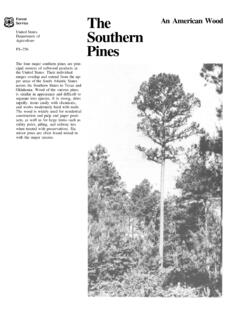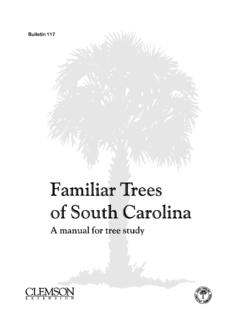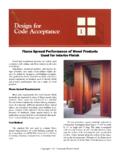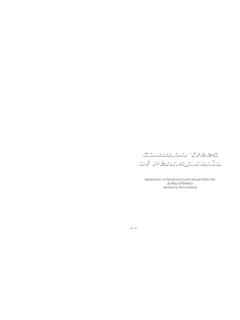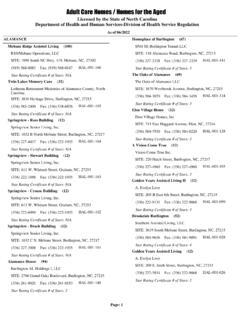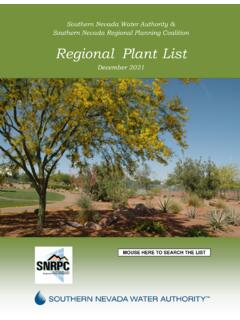Transcription of WOOD PRODUCT MARKINGS - USDA
1 17-WI-51 WOOD PRODUCT MARKINGS Wood PRODUCT MARKINGS that are important for construction inspection are grade and treatment MARKINGS . These MARKINGS are indicators of the quality and durability of the material. Grade MARKINGS indicate the species of wood and structural design parameters. The quality of the wood supplied must be equal to or greater than that shown on the drawings and specifications or the stability of these structures will be impaired. Treatment MARKINGS indicate the type of pressure treatment and retention amounts of the treatment. The retention value indicates the exposure expected for the material, , in ground. It also is an indicator of the life expectancy of the material. The most common type of treatment for NRCS designs is waterborne chemicals.
2 Material certification for wood species, grade, and treatment is needed from the supplier (not the contractor) for wood materials that are not identifiable by MARKINGS . The certification must indicate material that is equal to or better than the requirements shown on the drawings and specifications. Proper inspection of wood materials is difficult due to the following: 1. No MARKINGS or MARKINGS that are not legible, 2. Variety of symbols and abbreviations used, 3. Identifying the difference between grade and treatment MARKINGS , 4. southern pine Inspection Bureau has both grade and treatment criteria, and 5. Different standards used by different associations. The following narrative and exhibits are to assist personnel with wood construction inspection.
3 MARKINGS are often found 1 foot to 3 feet from the end of the material. Grade MARKINGS will have: 1. the association mark or logo; 2. the grade ( , construction, No. 1, No. 2, etc.); 3. the material species; 4. the moisture content at the time of surfacing; and 5. a mill number in some cases. See Exhibit 1 for examples. EFH Notice 210-WI-106 May 2004 17-WI-52 The commercial grades from highest strength to lowest strength are: Select Structural Stud No. 1 Construction No. 2 Standard No. 3 Utility Note: When a drawing specifies No. 2 grade wood members, No. 2, No. 1, and Select Structural grades may be used. No. 3 and lower grades cannot be accepted. Lack of identifiable grade MARKINGS does not mean the PRODUCT is acceptable or unacceptable.
4 All wood PRODUCT suppliers are not members of grading or treatment associations. The non-members may or may not mark lumber. Lumber supplied by non-members will not contain an association logo but may have a company logo. Treatment MARKINGS will usually have: 1. treatment material and retention value ( , ACQ, , etc.), 2. an association name or logo, 3. a treatment process indicated by letters and numbers ( , LP-22), and 4. a plant number or name. See Exhibit 2 for examples. Other abbreviations commonly used for lumber are: CM = center matched DF = douglas fir HEM = hemlock MSR = machine stress rated RGH, Rgh = rough SEL, Sel = select SR = stress rated STD, std = standard STR, STRUCT = structural T&G = tongue-and-groove WCH = west coast hemlock WRD = western red cedar YP = yellow pine EFH Notice 210-WI-106 May 2004 17-WI-53 Exhibit 1 Example Grade MARKINGS EFH Notice 210-WI-106 May 2004 17-WI-54 Exhibit 1 (continued) LEGEND OF GRADE MARKINGS IN EXAMPLES Grade Moisture Content at Time of Surfacing Species 1.
5 Standard Green Douglas Fir 2. Construction Green Eastern Hemlock or Tamarack 3. Stud Dry Balsam Fir 4. Construction Green Hemlock or Douglas Fir 5. Foundation Green Redwood 6. No. 1* Kiln Dried southern Yellow pine 7a. No. 1 Kiln Dried southern Yellow pine 7b. No. 1 Dry Douglas Fir 8. No. 2 Dry Douglas Fir 9. No. 2 Dry Douglas Fir 10. No. 1 Green Spruce or pine or Fir 11. Construction Dry Spruce or pine or Fir 12. No. 1 Dry Ponderosa pine *Note the absence of SYP , SP , or other MARKINGS to indicate southern yellow pine . It is the only species graded by this association. EFH Notice 210-WI-106 May 2004 17-WI-55 Exhibit 2 EXAMPLE TREATMENT MARKINGS Pressure Treated Lumber ACQ-D .40 Ground Contact PP or SYP 1984-1986 southern pine Inspection Bureau Inspected NRB 240 Quality Wood Treating Company Prairie du Chien, Wi.
6 Legend of Treatment MARKINGS ACQ = Alkaline Copper Quat, Type D..40 = Treatment Retention (lb/ft3). Ground Contact = Indicates lb/ft3 treatment retention. Use for ground contact only when there is a low replacement cost. Good for occasional exposure to rainwater. PP or SYP = Treatment process for Ponderosa pine and southern yellow pine . NOTE: THIS DOES NOT INDICATE THE SPECIES. 1984-1986 = Years plant is certified by Souther pine Inspection Bureau. NRB 240 = Coding number used by plant. EFH Notice 210-WI-106 May 2004 17-WI-56 This page reserves pages 17-WI-56 through 17-WI-60 for future supplements. EFH Notice 210-WI-106 May 2004










